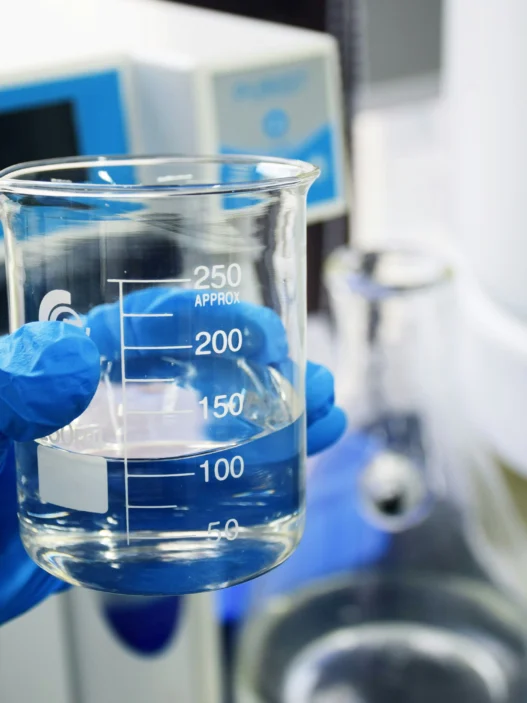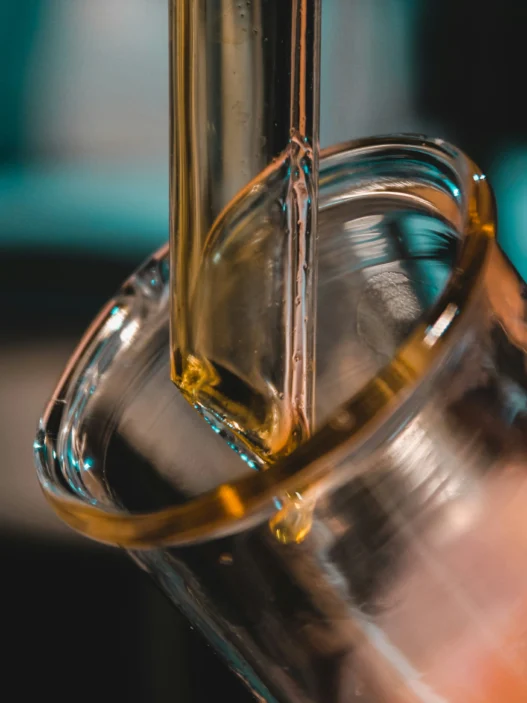2-Aminoquinoline is a chemical compound that holds significant relevance in everyday life due to its various applications in industries such as pharmaceuticals, agriculture, and materials science. In the pharmaceutical sector, it is used as a building block for the synthesis of a wide range of drugs, including antimalarials, antiretrovirals, and antifungals. In agriculture, 2-Aminoquinoline is utilized in the development of pesticides and herbicides. Additionally, it is employed in materials science for the production of fluorescent dyes, polymers, and corrosion inhibitors. The versatility of 2-Aminoquinoline underscores its importance in numerous aspects of modern life.
Table of Contents:
- 💡 Commercial Applications
- ⚗️ Chemical & Physical Properties
- 🏭 Production & Procurement
- ⚠️ Safety Considerations
- 🔬 Potential Research Directions
- 🧪 Related Compounds
💡 Commercial Applications
2-Aminoquinoline, a heterocyclic compound, finds various commercial and industrial applications. It is utilized in the synthesis of dyes, rubber chemicals, antioxidants, and pharmaceuticals. Due to its ability to form complexes with transition metal ions, it is also used in analytical chemistry as a ligand for metal chelation.
In the realm of drug and medication applications, 2-Aminoquinoline plays a crucial role. Its derivatives, such as chloroquine and hydroxychloroquine, are widely used as antimalarial agents. These compounds exhibit potent antiparasitic activity against malaria-causing Plasmodium species and are considered essential medications for the treatment and prevention of malaria.
Further studies have shown promising potential for 2-Aminoquinoline derivatives in the treatment of other diseases. These compounds have demonstrated anticancer, antiviral, and anti-inflammatory properties, making them valuable candidates for the development of novel pharmaceuticals. Research is ongoing to explore their therapeutic effects in various medical conditions beyond antimalarial applications.
⚗️ Chemical & Physical Properties
2-Aminoquinoline is a white to pale yellow crystalline solid with a faint odor. The compound is not soluble in water but is soluble in organic solvents such as ethanol and acetone.
With a molar mass of 144.18 g/mol and a density of 1.12 g/cm³, 2-Aminoquinoline is heavier than common food items such as sugar (molar mass of 342.3 g/mol, density of 1.59 g/cm³) and salt (molar mass of 58.44 g/mol, density of 2.16 g/cm³).
The melting point of 2-Aminoquinoline is 57-59°C, while the boiling point is 256-258°C. These values are higher than those of common food items like butter (melting point of 32-35°C, boiling point of 177°C) and chocolate (melting point of 34-38°C, boiling point above 160°C).
2-Aminoquinoline has limited solubility in water, making it difficult to dissolve in this solvent. Additionally, the compound has a medium viscosity, which is lower than that of common food items like honey (high viscosity) and milk (low to medium viscosity).
🏭 Production & Procurement
2-Aminoquinoline is primarily produced through the reaction of aniline with anthranilic acid in the presence of a catalyst. This process typically takes place in a solvent such as acetic acid or sulfuric acid. The resulting product is then isolated and purified to obtain 2-Aminoquinoline.
The procurement of 2-Aminoquinoline can occur through various industrial chemical suppliers or specialized chemical manufacturers. The compound is typically available in the form of a white to pale yellow solid. Transporting 2-Aminoquinoline may involve adherence to strict safety regulations due to its toxic and potentially hazardous nature.
When procuring 2-Aminoquinoline, it is vital to ensure compliance with relevant regulations governing the handling and transportation of hazardous chemicals. Proper labeling, packaging, and documentation are essential to maintain safety and regulatory compliance throughout the procurement and transportation process. In addition, proper storage conditions should be maintained to prevent degradation or contamination of the compound.
⚠️ Safety Considerations
Safety considerations for handling 2-Aminoquinoline should be taken seriously due to its classification as a hazardous chemical. It is important to use appropriate personal protective equipment such as gloves, goggles, and lab coats when working with this compound to prevent skin contact, eye irritation, and inhalation of its fumes. Additionally, it is crucial to work in a well-ventilated area or use fume hoods to minimize exposure to potentially harmful vapors.
It is essential to store 2-Aminoquinoline in a tightly sealed container away from sources of heat and ignition to prevent accidental fires and explosions. In case of a spill, it is important to clean it up promptly using appropriate absorbent materials and to dispose of it according to local regulations for hazardous waste management. Regular training on safe handling procedures and emergency response protocols should be provided to all personnel working with 2-Aminoquinoline to ensure a safe working environment.
The hazard statements for 2-Aminoquinoline include “Causes skin irritation,” “Causes serious eye irritation,” and “May cause respiratory irritation.” These statements indicate the potential risks associated with exposure to this compound, highlighting the importance of using appropriate protective measures to prevent adverse health effects. It is crucial to follow strict safety protocols when handling 2-Aminoquinoline to minimize the risk of skin, eye, and respiratory irritation.
Precautionary statements for 2-Aminoquinoline include “Wear protective gloves/eye protection/face protection,” “Use only outdoors or in a well-ventilated area,” and “Avoid breathing dust/fume/gas/mist/vapors/spray.” These statements emphasize the importance of using proper personal protective equipment, working in a well-ventilated environment, and avoiding inhalation of the compound to reduce the risk of exposure to its harmful effects. Adhering to these precautionary measures is essential to ensure the safe handling of 2-Aminoquinoline and to protect the health and safety of individuals working with this chemical.
🔬 Potential Research Directions
One potential research direction for 2-Aminoquinoline could be its application in pharmaceuticals as a building block for new drug development due to its unique structural properties.
Another area of interest could be exploring the potential of 2-Aminoquinoline in the field of materials science, such as its use in the synthesis of new organic semiconductors or functional materials.
Further research could focus on the bioactivity of 2-Aminoquinoline and its derivatives, investigating their potential as antimalarial or antibacterial agents through structure-activity relationship studies.
🧪 Related Compounds
One similar compound to 2-Aminoquinoline based upon molecular structure is 8-Aminoquinoline. This compound differs from 2-Aminoquinoline in the position of the amino group on the quinoline ring. By moving the amino group to the 8-position, the structure of 8-Aminoquinoline is altered while still maintaining similar properties to 2-Aminoquinoline.
Another similar compound is 4-Aminoquinoline, which also shares the quinoline ring structure with 2-Aminoquinoline. The difference lies in the position of the amino group on the quinoline ring, being located at the 4-position in this compound. This subtle variation in molecular structure results in different chemical and biological properties compared to 2-Aminoquinoline.
Additionally, 6-Aminoquinoline is another compound that closely resembles 2-Aminoquinoline in structure. With the amino group positioned at the 6-position on the quinoline ring, this compound exhibits similar characteristics to 2-Aminoquinoline while still displaying slight differences in reactivity and biological activity. The structural similarity between these compounds allows for potential comparisons in various chemical and biological studies.




